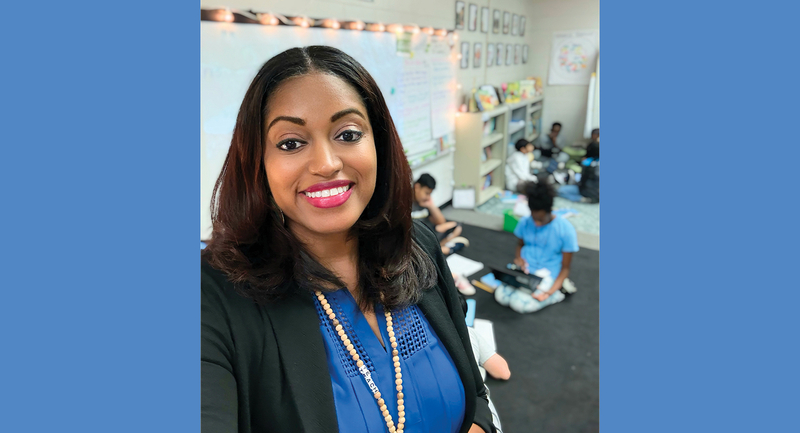As many coaches know, conflict can undermine an organization or team’s well-being. We’ve witnessed how conflict erupts among individuals, how factions form in a school, and how a school’s culture suddenly becomes toxic. In this kind of scenario, conflict is destructive and should be avoided.
However, conflict is also an opportunity. As I’ve written in my book, The Art of Coaching Teams (Jossey-Bass, 2016), “[The] path to transforming our schools inevitably passes through a vast terrain of conflict” (p. 248). If educators are to have the kinds of conversations necessary to meet the needs of every child, then we’re going to have to learn how to navigate conflict.
When I make this claim in trainings I’m leading, I note a range of emotions—including discomfort and anxiety—from those in attendance. Everyone has a different orientation to conflict, and our identities and lived experiences contribute to how we view and engage with it. Many of us grew up in homes and communities where conflict was not navigated skillfully, and we may have experienced a lot of fear. This is important to acknowledge as we build skills to engage in productive conflict.
Teams need healthy conflict—the kind that allows for disagreements, different viewpoints, and a path forward that deepens relationships.
The fact is, for teams to be effective, they need to have conflict. Not destructive conflict. Not conflict in which people shout or are passive-aggressive or where pent-up frustrations culminate in a rupture. Teams need healthy conflict—the kind that allows for disagreements, different viewpoints, and a path forward that deepens relationships.
Affective Conflict vs. Cognitive Conflict
Let’s look at two kinds of conflict we as humans commonly experience: affective conflict and cognitive conflict.
Affective conflict is personalized conflict: differences become personal, and people revert to blaming modes and unhelpful behaviors. Mindsets shift from “we have a problem” to “you are the problem.” Opposition is viewed as something to thwart rather than to explore. The goal becomes “winning” for its own sake, rather than coming up with the best possible solution, and relationships suffer.
In contrast, cognitive conflict is about ideas, strategies, and approaches. People focus on the tasks or issues. The parties might argue and exchange views vigorously, but there is two-way communication and an openness to hearing one another. The goal is to find the best possible solution, rather than to win the argument. Participants see alternative perspectives as valuable rather than threatening. This kind of conflict enables us to build better ideas and stronger teams.
How do you know if conflict in a team is healthy? You’ll know if teammates:
- Wrestle with ideas.
- Ask questions to probe for deeper understanding.
- Change their minds.
- Demonstrate curiosity.
- Hold students at the center of the work.
How to Teach Healthy Conflict
So, how do you build the skills needed to have productive cognitive conflict? Start by including conflict-building skills, such as using sentence stems for healthy conflict, in professional development and team meetings.
To illustrate, I often find that people just don’t know what to say when there’s conflict; they don’t have the words. Providing specific sentence stems can go a long way toward closing this gap. Here are a handful of those stems (you can download a complete list here):
- “Can you elaborate on your thinking because I’m not sure I understand?”
- “I have some concerns about that suggestion. Could you explain it more?”
- “I want to push back on that idea. I’ve noticed ___ and I would suggest ___.”
- “I hear what you’re saying, but have you considered ___?”
- “Can you help me understand why you believe that? My experience has led me to a different conclusion, but I want to understand your perspective.”
- “I disagree with you about that, but I want to hear your thoughts.”
- “I disagree with you about that, but I’m willing to change my mind.”
- “It would help me get behind that idea if I could hear more about ___.”
- “I agree with several points you made, but I want to challenge you on this idea.”
- “I have a request to make. Are you open to hearing it?”
Once I’ve provided people with sentence stems, I engage them in practicing conflict around a low-stakes scenario, such as debating which snacks to bring for Back-to-School Night or whether to take students on a field trip to the zoo or to the aquarium. This exercise enables teams to practice using the strategies, as well as to cultivate awareness of the thoughts and feelings that arise around conflict.
This kind of conflict enables us to build better ideas and stronger teams.
The next step is to provide higher-stakes conflict scenarios. For example, you can set up a scenario where one person (perhaps in the role of principal) is facilitating a leadership team meeting and presents a new initiative on social-emotional learning that they want the school to adopt. One teacher says, “I just don’t think that’s right for our school.” Another teacher leans back, crosses their arms, and looks away. How might the principal—as well as the other teammates—respond? Just asking, “Can you elaborate on your thinking because I’m not sure I understand?” can go a long way to getting the discussion back on track.
To turn destructive conflict into healthy conflict, we need tools and resources—such as the sentence stems I’ve listed—and we need to practice using them. If leaders offered this kind of professional development and modeled a positive engagement with conflict, I’d wager that our schools would be far healthier and more resilient places.








